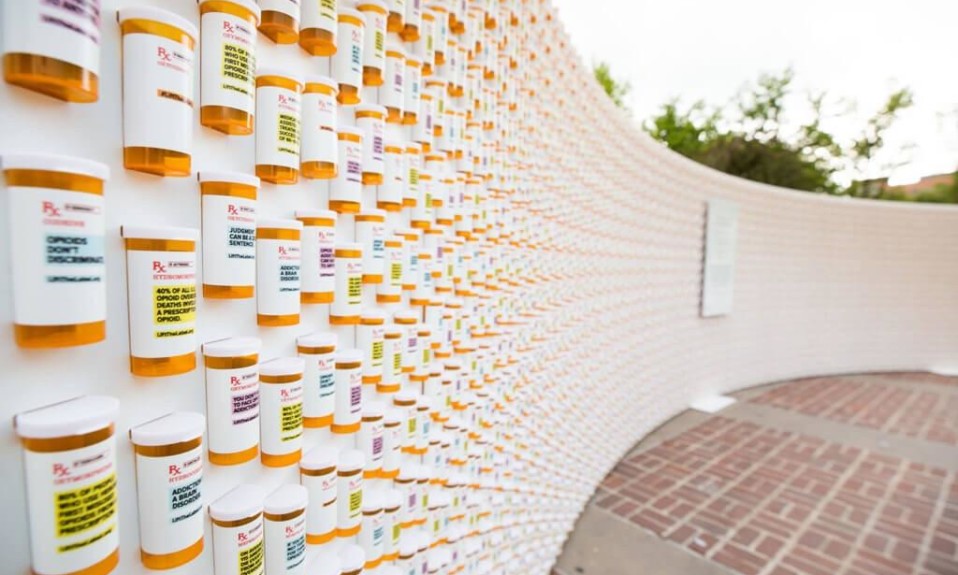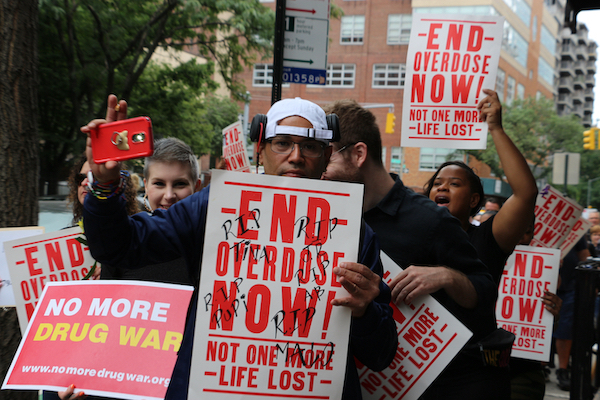Grassroots programs are tapping into creativity to make headway in reducing toxic perceptions of substance use disorder
By Jason Langendorf
November 5, 2020“Drug addiction is more strongly associated with social disapproval and discrimination than any physical or psychiatric condition.” So wrote psychologist Erving Goffman in his 1963 book Stigma: Notes on the Management of Spoiled Identity.
Almost 60 years later, our societal regard for substance users and addiction hasn’t changed much.
To help change this, a number of publicly funded and non-profit programs across the country have recently been launched. In places like North Carolina, Ohio and Colorado, anti-stigma campaigns incorporating empathy, outreach and art have been mobilized to help change attitudes about people with addiction.
They need the help that society can give them, but they don’t need words like ‘addict’ and ‘junkie.’ That’s a big part of what we’re trying to do—change language, change attitudes.”—Theresa Clower, founder of Into Light, artist and mom of a son who overdosed in 2018
Into Light—Portraits
Theresa Clower is founder of Into Light, a North Carolina-based non-profit dedicated to reducing the stigma and shame associated with addiction through art. When her son died from a drug overdose on New Year’s Day in 2018 at age 32, Clower dealt with her grief by drawing his portrait. She then found herself inspired to continue creating graphite drawings of other young people who had lost their lives to overdose. Many hadn’t sought addiction care.
“Less than 10% of the people who need help are asking for it,” Clower said in an interview with Hola Carolina. “We’ve got to get past that.”
Last month Into Light hosted a virtual exhibition in Asheville, bringing together four women from across North Carolina who had lost children to overdose death. The exhibit featured portraits and biographies of their children and others. The organization is currently hosting another exhibition at Notre Dame of Maryland University through Nov. 22 and plans to put on events in all 50 states in hopes of creating a more open and supportive environment for people with addiction.
“They need the help that society can give them, but they don’t need words like ‘addict’ and ‘junkie,’” Clower says. “That’s a big part of what we’re trying to do—change language, change attitudes.”
Recover for Life—Mural
Last month in Columbus, Ohio, Franklin County Public Health launched the Recover for Life campaign, an anti-stigma initiative funded by a three-year, $3 million annual grant from the Centers for Disease Control and Prevention (CDC). As part of the program—a response to a reported 73% increase in overdose deaths in the county from January to June over the same period in 2019—a mural was painted by artist Amy Haggard as a “support wall” that reads, in part, “Let’s come together to end the stigma around the disease.”
Lift the Label—Personal Stories
Another federally funded project, Colorado’s Lift the Label program, was launched in May 2018 by the state Office of Behavioral Health (OBH). The initiative was driven by data collected from the Colorado Health Institute, which identified stigma as the No. 1 barrier to substance use services in the state.
Says Elizabeth Owens, director of policy and communications at Colorado’s OBH: “We wanted to focus on the stories of real Coloradans, because part of de-stigmatizing—the conversation around addiction, around medication-assisted treatment—is hearing from people who look like your neighbors or look like your family members, or who look like you.
“So we recruited Coloradans to share their personal stories in this campaign. They shared stories of recovery and they shared stories of the stigma that was a barrier to them receiving treatment, all in pursuit of de-stigmatizing the conversation around addiction and treatment and helping people get access to medication assisted treatment.”
The campaign includes the construction of the Opioid Memorial Wall, an 8-feet-tall, 34-feet-long structure made from 4,200 pill bottles. Each represents 10 of the more than 42,000 people who died as a result of opioid use in 2016, and each has an anti-stigma message. Before the arrival of the pandemic, visitors were encouraged to write a memory of a loved one affected by opioid use on the back of the wall, which has yet to receive a permanent home.
Photo: Colorado’s Opioid Memorial Wall














